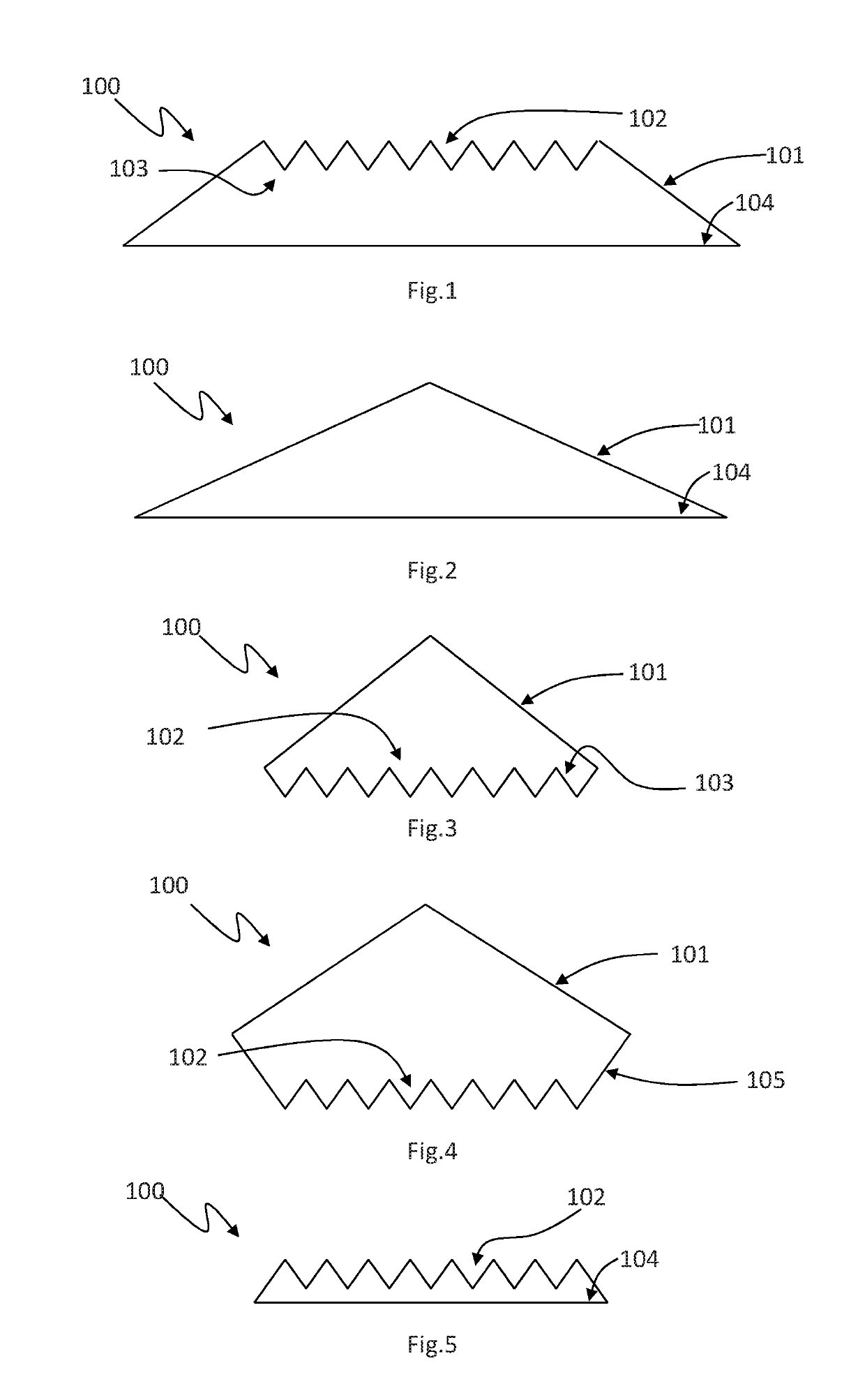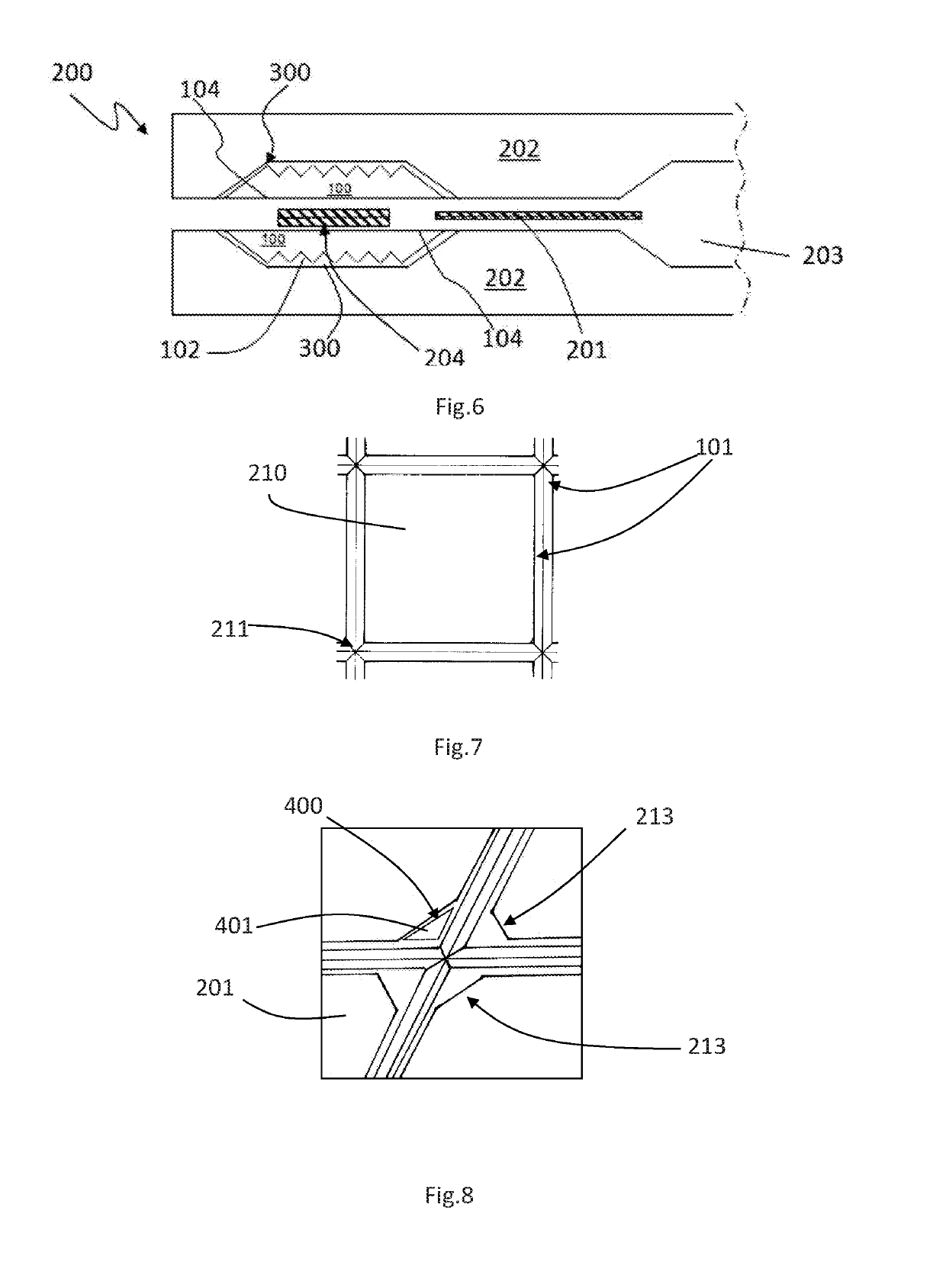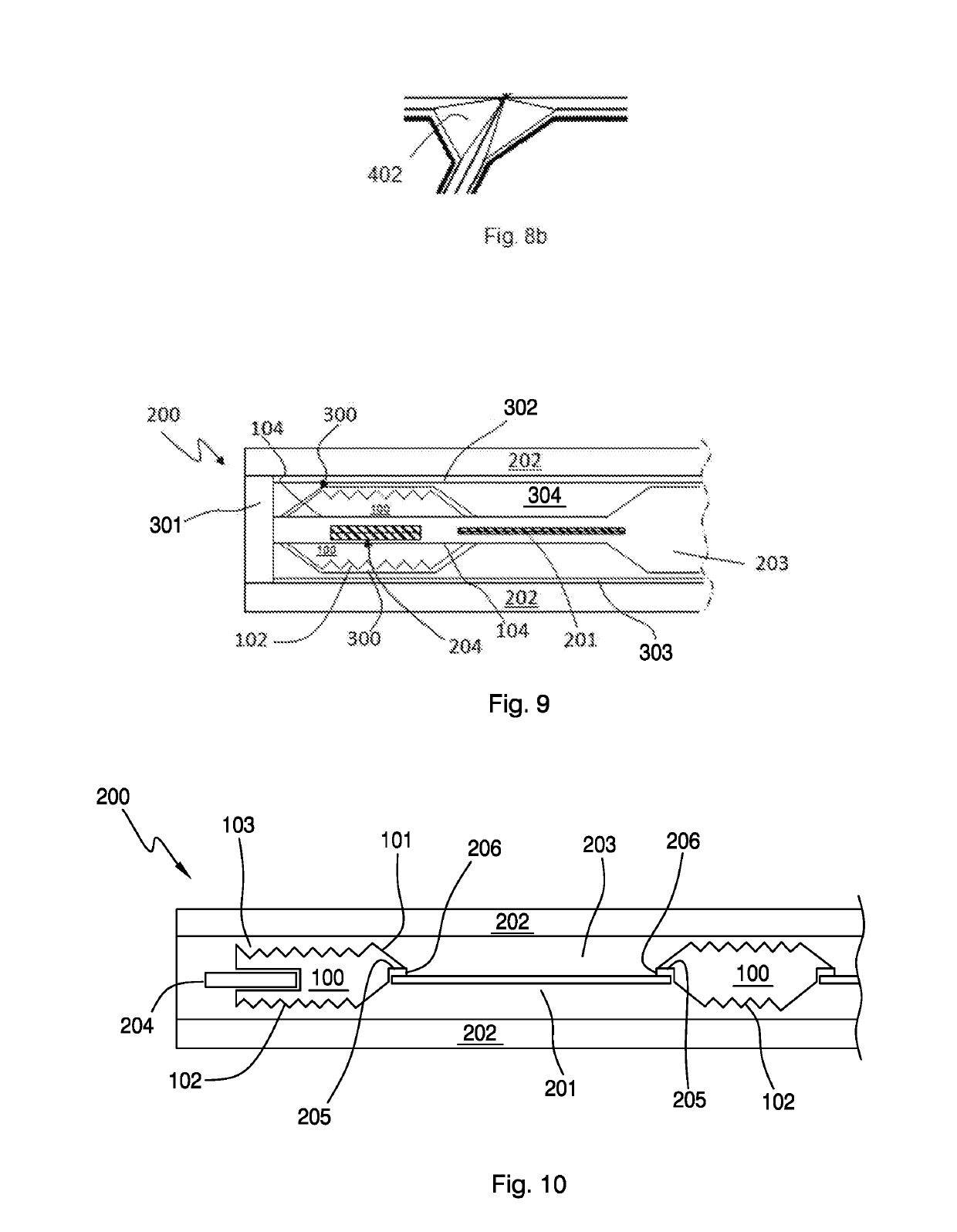Photovoltaic module
- Summary
- Abstract
- Description
- Claims
- Application Information
AI Technical Summary
Benefits of technology
Problems solved by technology
Method used
Image
Examples
first embodiment
[0054]In the first embodiment illustrated in FIG. 1, the solar deflector 100 comprises a first pair of reflective surfaces 101 oriented in opposite directions to each other, between which there is interposed a sequence 102 of reflective surfaces 103 positioned in the form of a triangle.
[0055]Substantially, the sequence 102 of reflective surfaces 103 extends along a direction of maximum extension at right angles to the direction which is identified by the thickness of the photovoltaic panel, and also comprises a sequence of reflective surfaces 103 joined at one end of them alternatively upper and lower and oriented to each other in opposite directions and symmetrical about an axis at right angles to the direction of maximum extension identified by them, without interposing further walls between them, namely parallel to the direction of maximum extension, thus being in direct connection.
[0056]It should also be noted that although the accompanying drawings illustrate reflective surface...
third embodiment
[0067]In the deflector 100 according to this invention, illustrated in FIG. 3, in a similar fashion to the embodiment illustrated in FIG. 2, the reflective surfaces 101 are oriented in the opposite directions to each other, and each has a first end joined with the first end of the other reflective surface 101 so as to form an angle at the top which is convex and a second end which, on the other hand, is joined with a sequence 102 of reflective surfaces 103 which thus lie at a height lower and which correspond in use to the rear face of the photovoltaic module.
[0068]A fourth embodiment of the deflector 100 according to the invention is illustrated in FIG. 4. The fourth embodiment is similar to the third embodiment described above. The fourth embodiment also has reflective surfaces 101 which are oriented in the opposite directions to each other, and each has a first end joined with the first end of the other reflective surface 101 so as to form an angle at the top which is convex and ...
fourth embodiment
[0069]The third and fourth embodiment described above each have the presence of reflective surfaces on both the front and rear faces; this feature is important since these collectors are designed for a use inside a two-faced photovoltaic module, that is to say, characterised by cells which are able to collect the solar radiation on both faces and having front and rear covering plates which are both transparent.
PUM
 Login to View More
Login to View More Abstract
Description
Claims
Application Information
 Login to View More
Login to View More - R&D
- Intellectual Property
- Life Sciences
- Materials
- Tech Scout
- Unparalleled Data Quality
- Higher Quality Content
- 60% Fewer Hallucinations
Browse by: Latest US Patents, China's latest patents, Technical Efficacy Thesaurus, Application Domain, Technology Topic, Popular Technical Reports.
© 2025 PatSnap. All rights reserved.Legal|Privacy policy|Modern Slavery Act Transparency Statement|Sitemap|About US| Contact US: help@patsnap.com



